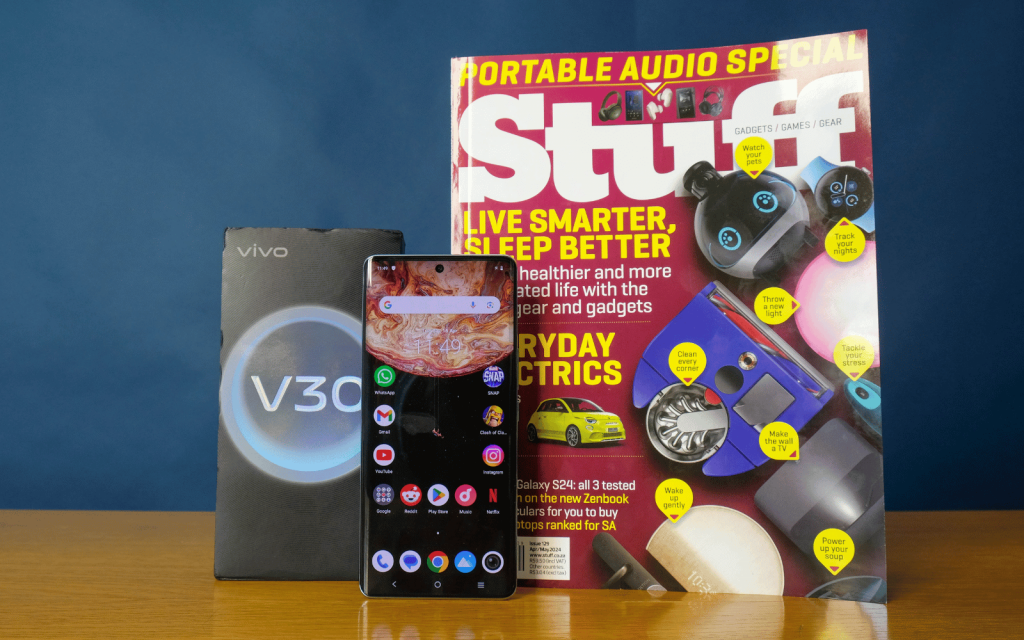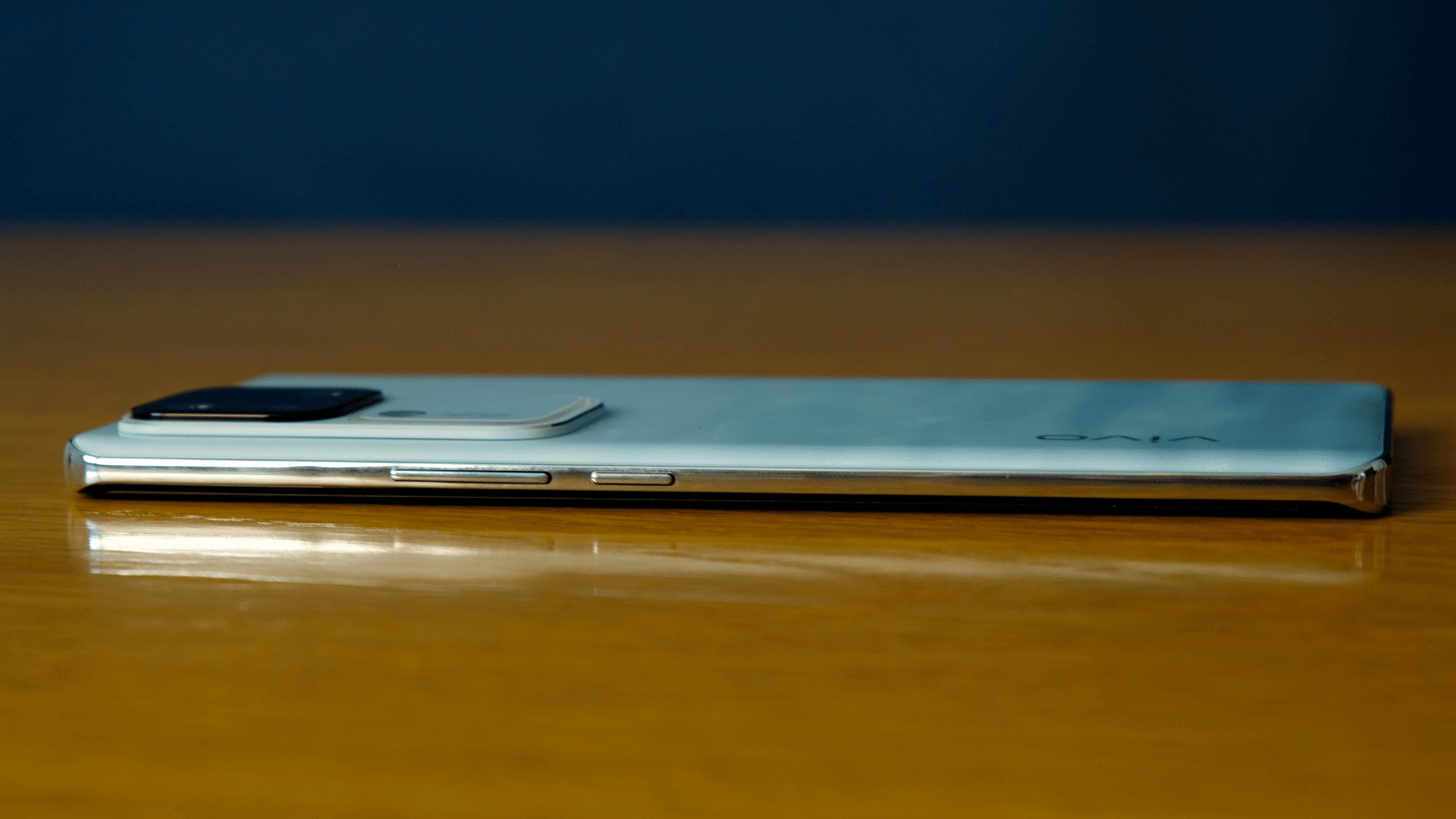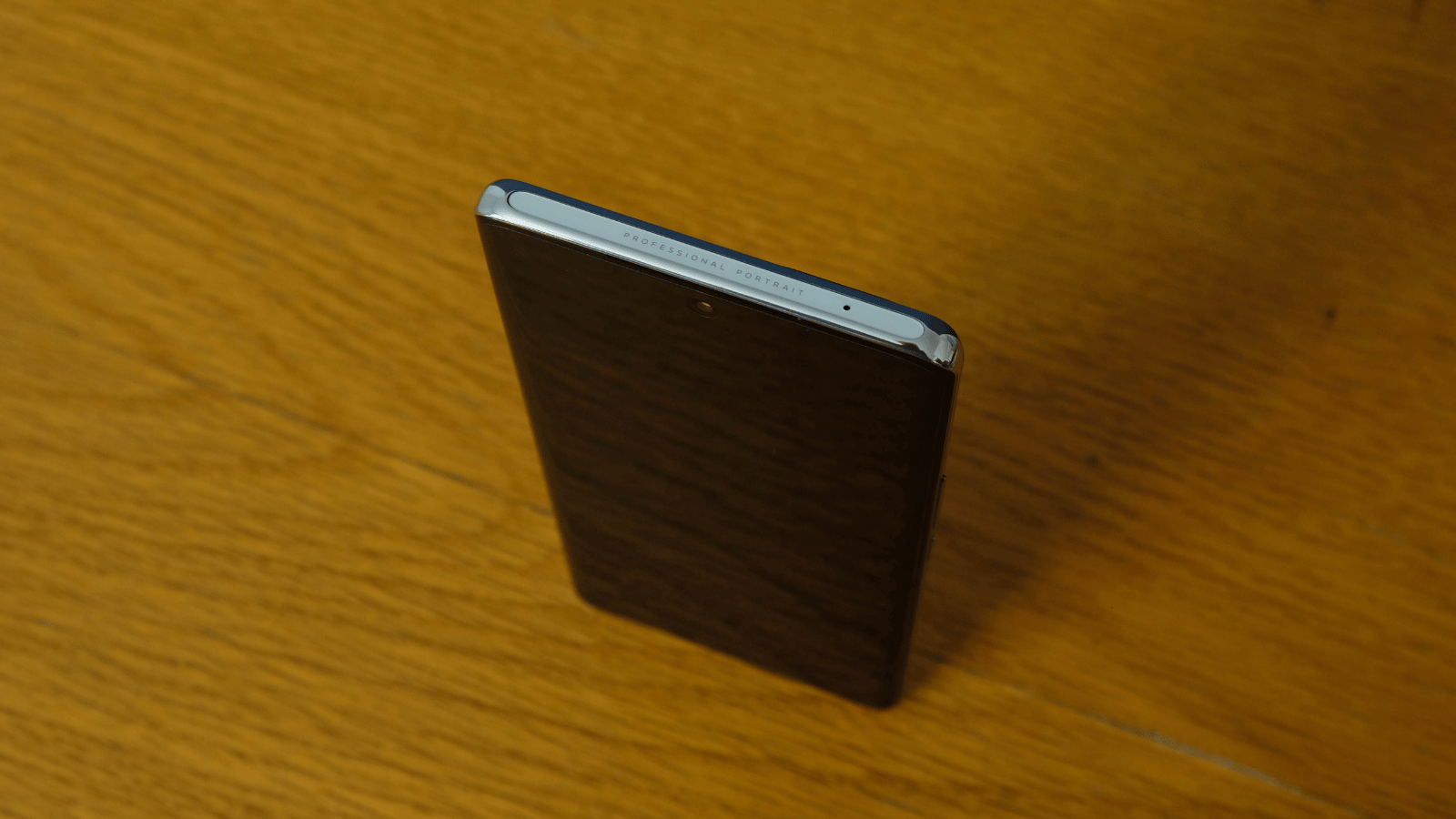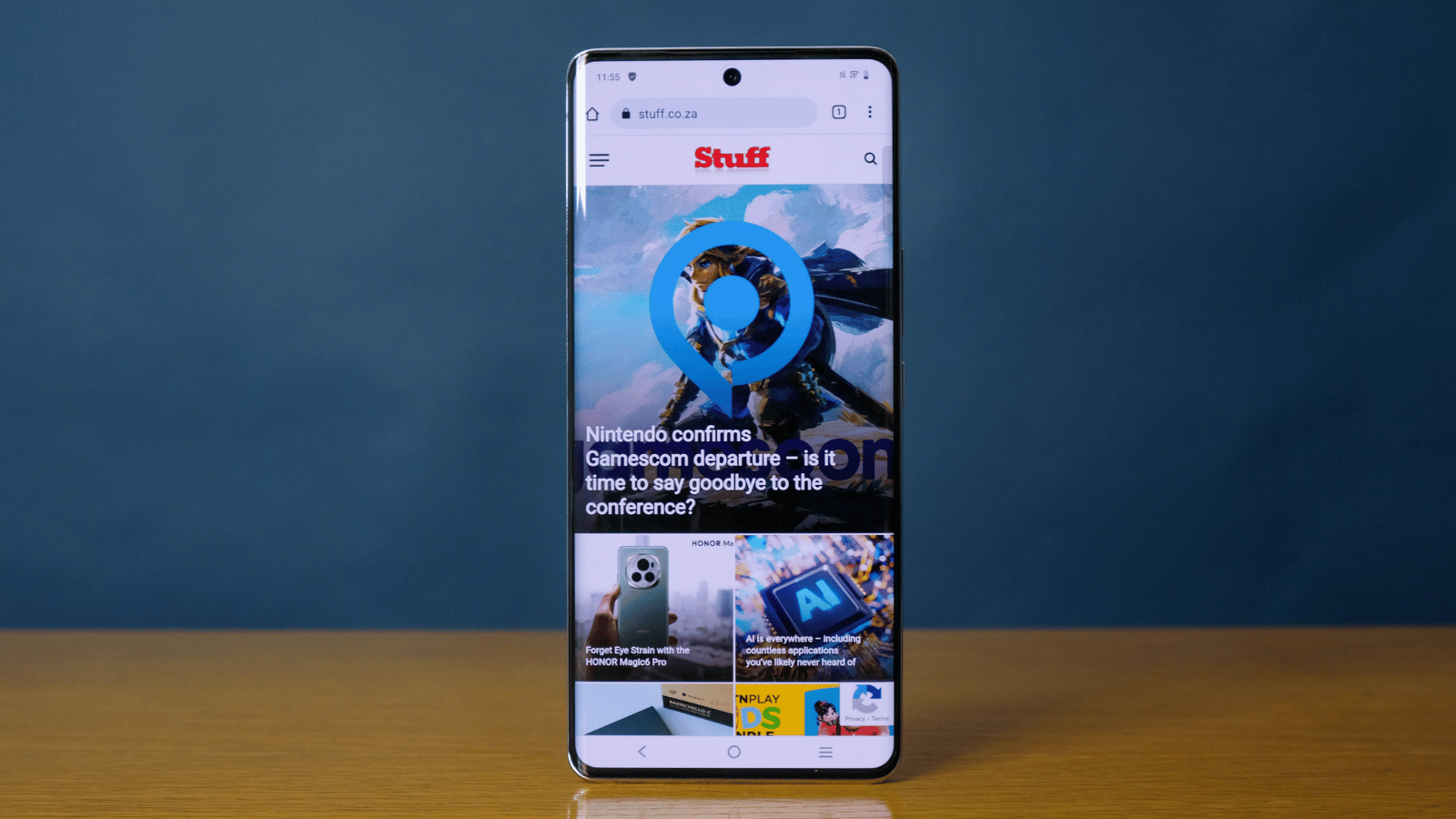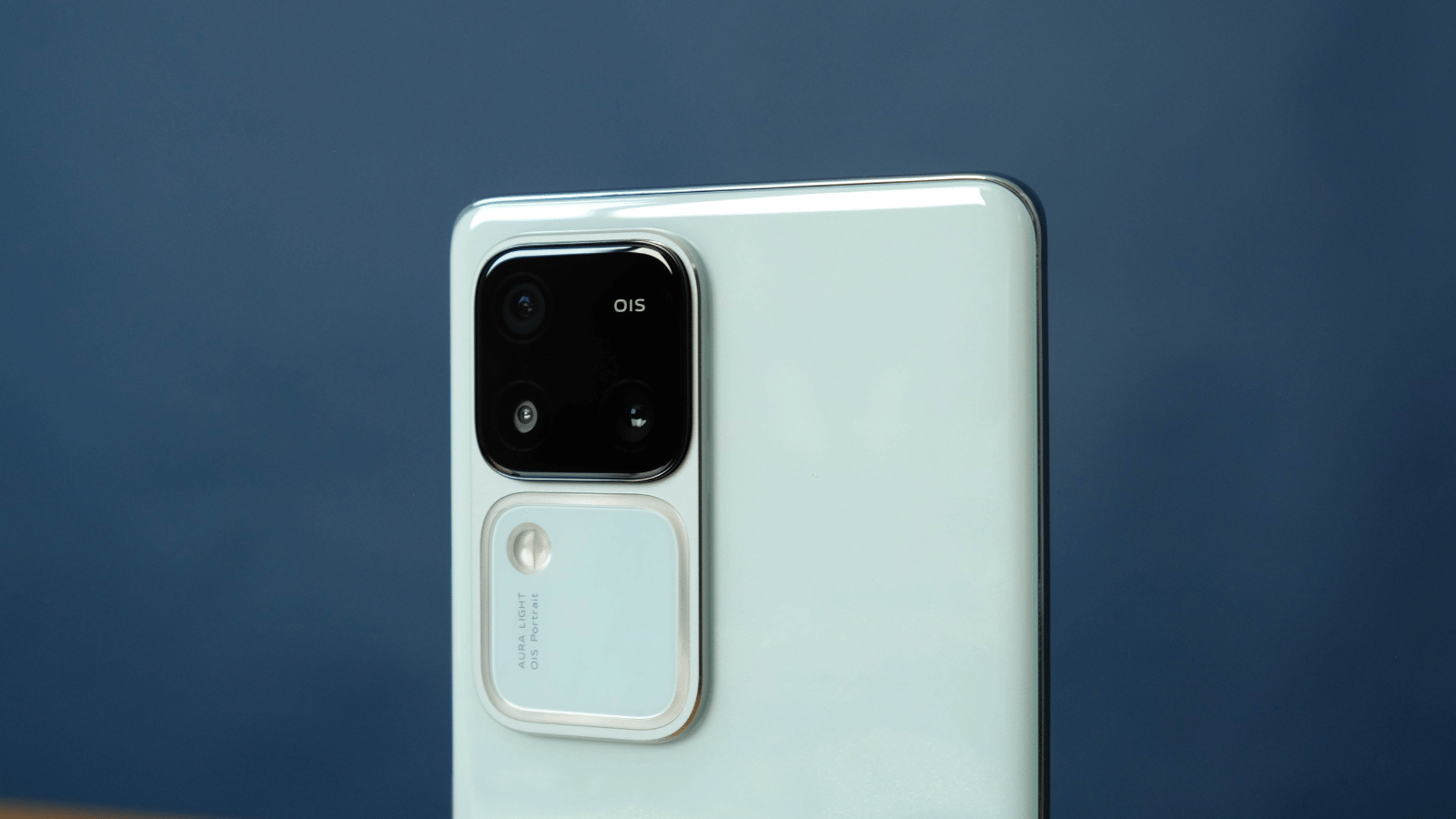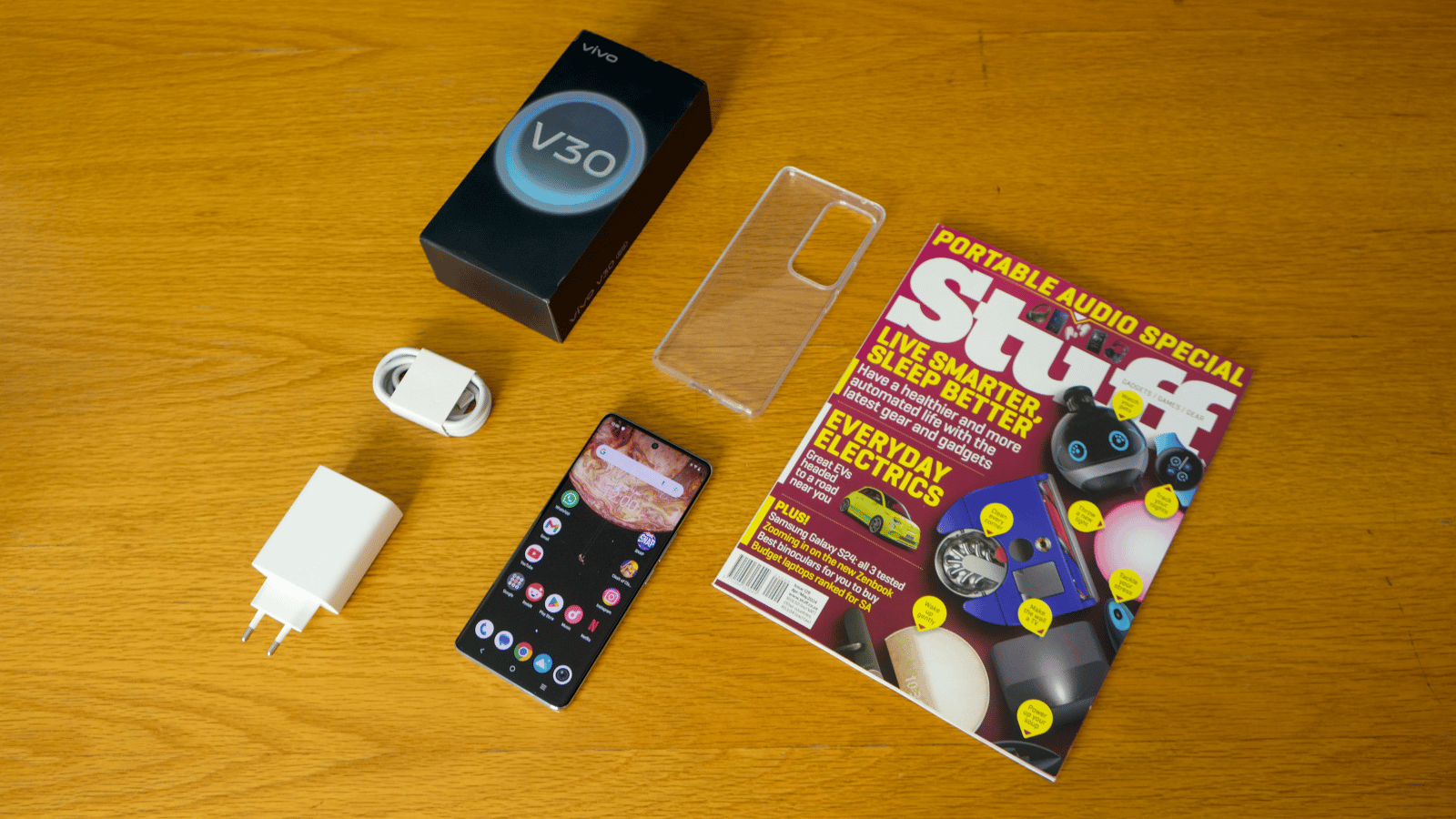The Vivo V30 will be an excellent smartphone – in a year's time. It's got plenty of decent specs and an overqualified camera for a mid-ranger, but falls short right at the finish line. The advertised R20,000 price tag is just too heavy to bear in a market crowded with similarly-priced flagships coming down from the industry's leaders. You won't be disappointed with the V30 5G, but we can't promise regret won't settle in eventually.
-
Design
-
Performance
-
Battery
-
Camera
-
Value
Stuff loves a good mid-range smartphone. See? It’s a pity that Vivo’s latest in that department, the V30 5G, couldn’t quite live up to the mid-range standards we’ve come to expect from the Chinese manufacturer. Not because the phone is bad — far from it. No, our problem lies with the V30’s absurd almost Pro-like pricing (without the Pro), putting it in the same league as Samsung’s Galaxy 24.
If it wasn’t already obvious, we disagree heavily. The V30 is a great phone, don’t get us wrong. The Aura Light Portrait System Vivo’s been on about does plenty to help the V30 stand out among an increasingly deepening pool of samey mid-rangers in South Africa. Never mind its slight and sexy frame that still finds room to fit in a 5,000mAh battery. But for R20,000? We’ll stick with the base Galaxy S24. Thanks, though.
It’ll charm the cover right off
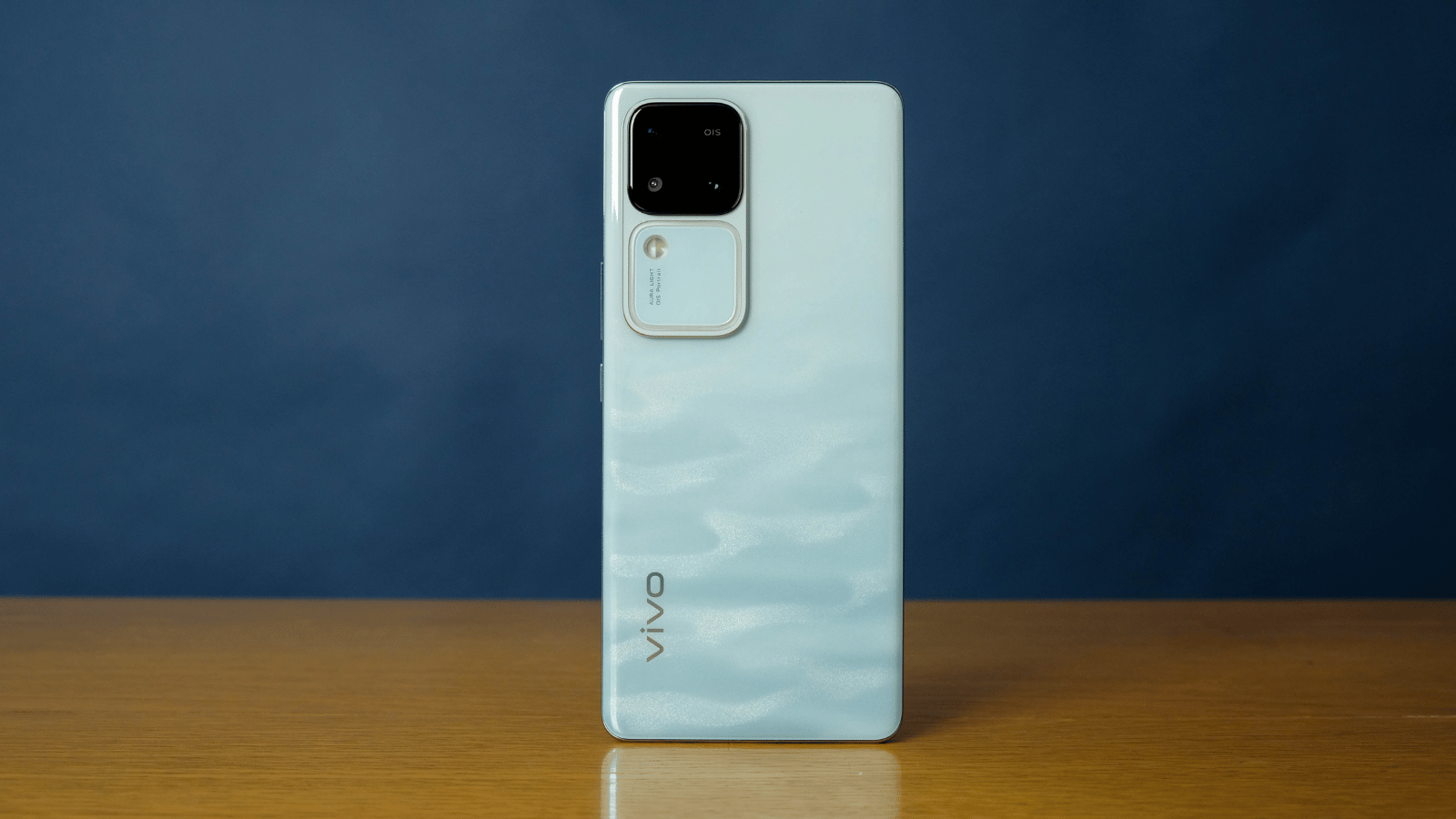
Until we saw Honor’s garish orange monstrosity a few months back, we’d have told you we rarely care about the shade or hue that our review models turn up adorning. That’s still (mostly) true, but there’s just something about the V30’s Waving Aqua coating that makes us feel a special type of way. Some credit goes to the rest of the device it’s slathering, of course.
You’d be forgiven for mistaking the V30 for some souped-up Samsung travelling from about six years previously. It’s commandeered the same basic shape — curvy, metallic edges, glass rear and a wraparound display — without allowing the camera to dominate the centre of the real estate. Vivo’s look is more refined, relegating the sensors to where all cameras sit now and a simple Vivo logo on the bottom.
That all equates to a significantly slimmer body than Vivo, and us, are used to. Apparently, the company’s slimmest smartphone (7.45mm) can still pack in a 5,000mAh battery. It’s a comfortable, premium-feeling experience, and one that’s improved by the not-so-protuberant camera that keeps it from rocking like a pendulum. You’ll even scoff at the accompanying see-through cover Vivo’s thrown in to feel the smooth glass beneath your fingertips — until you realise just how slippery it gets.
Occasionally capable
Vivo South Africa might not have the Pro model hanging around (we’re getting woozy just thinking of the price), but it almost doesn’t matter. The regular V30 shares the same 6.78in FHD+ AMOLED screen capable of 120Hz, HDR10+ and a smattering of Schott Alpha glass to protect it all. Vivo’s promises of 2,800 nits of local peak brightness were all well and good until we touched some grass with the sun at our backs. We’re not sure exactly where those nits went, but we think they’re locked off behind HDR content on Netflix.
Take it back inside, however, and you’ll be peachy. Not that you should be surprised, at this price point. We experienced no issues of dropped frames or screen tearing — though opening games did cause the phone to stutter just a smidge before it righted those wrongs and returned to its speedy-enough self. That’s more of a chipset thing.
If you weren’t convinced that this was a mid-ranger, you’ll have your mind changed by Qualcomm’s Snapdragon 7 Gen 3 chipset. At its core, this is a ‘fine’ chipset. We, at least, had no troubles when it was tasked with nothing more difficult than scrolling through Reddit or watching a YouTube video. Hand it something more taxing, like jumping between games or fiddling with the camera in quick succession — and it’ll struggle to keep up with your speed. That’s even with the 12GB of RAM powering everything in the background.
Pit the Snapdragon 7 Gen 3 against the base S24’s Exynos 2400, and it’s no contest. Exynos wipes the floor with the 7 Gen 3 — and does so for a few hundred bucks more. That’s not to say this Snapdragon’s efforts aren’t perfectly fine for the average person. As long as the average person isn’t dropping R20,000 on a mid-ranger when something considered ‘flagship’ is within reach at a grand or so more.
Vivo might babble on about the V30 being their thinnest smartphone with a 5,000mAh tucked away inside, but that doesn’t mean much if the battery can’t put up a fight against a day out. Fortunately, we found that V30 getting through a day with plenty of battery to spare. Should you manage to kill it a little early, the 80W charger (and included adapter) is more than adequate to negate that in roughly 45 minutes.
An aura reconnaissance mission (P.S. it worked)
Vivo knows you’re settling for a middling chipset. That’s why it’s compensating so heavily where the cameras are concerned — so it has something to point to and go ‘ooooh!’ We won’t pretend it hasn’t worked on us, with the V30’s 50MP leading the three camera set-up on the rear. It’s sitting alongside another 50MP ultrawide lens and a 2MP depth sensor – all backed up by the Aura Light Portrait System. (That’s the big square under the cameras).
The main sensor is where we spent most of our time and returned generally pleased with the experience. Daytime photos hardly needed any fiddling beforehand — aside from switching to the ‘natural’ mode for most photos (beating out ‘vivid’ and ‘textured’) offering the best colour reproduction and sharp photos all around in direct sunlight. Remove that, and ‘vivid’ becomes your best friend to crank out some excellent pictures.
Nighttime photography is really where the V30 excels, however. That’s partly due to the sensors at work, but mostly thanks to the Aura Light Portrait System doing the grunt work. Being able to warm up or drain a scene of its temperature quickly beat the gimmick allegations and became a feature we begrudged our own phones for not replicating. There’s no Light System around the front end, but the 50MP sensor puts up an equally impressive display of power.
Vivo V30 5G verdict
We have our grievances with the Snapdragon chipset in here, but that’s only part of the problem. We can overlook the occasional stutter if you’re picking up the device at a bargain, but we’d call the V30 5G anything but. It’s a great phone that reps above-average camera tech and an interesting take on nighttime photography, but R20,000 falls a good few thousand out of our comfort zone. When you can pick up something like Xiaomi’s comparable Redmi Note 13 Pro+ for R9,000 less, it’ll have you questioning whether that Aura Light System is worth the dough.

